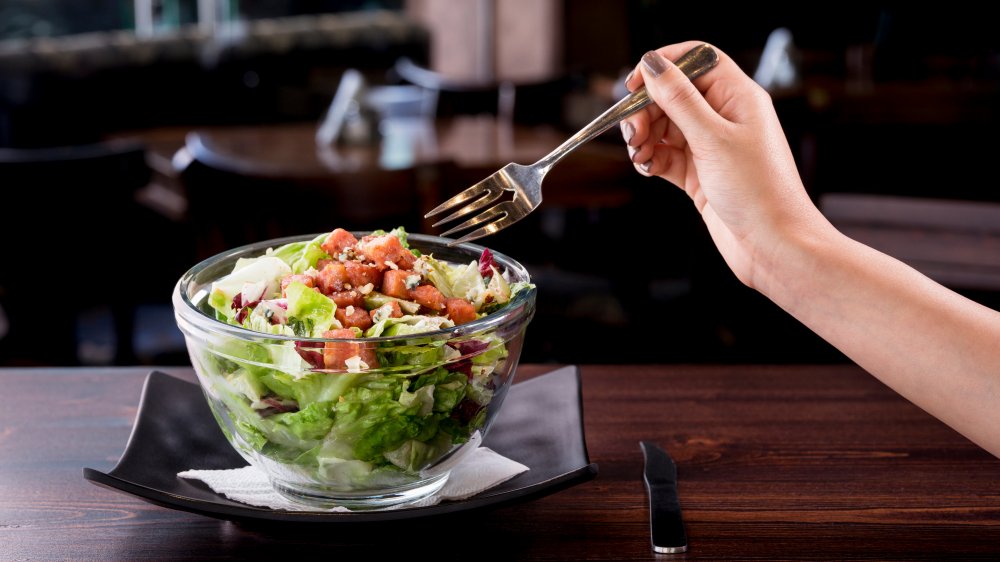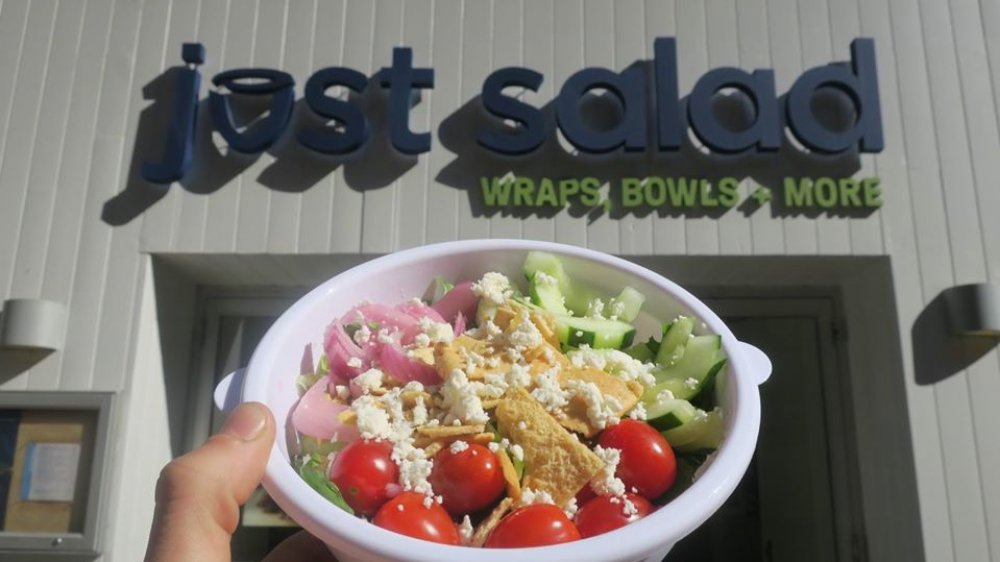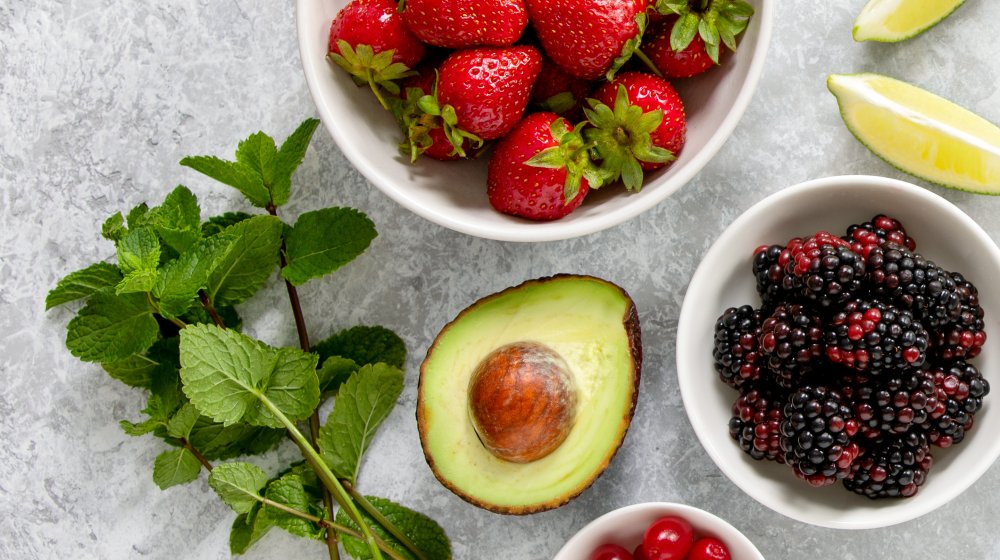The Real Reason Your Bougie Lunch Salad Costs So Much
For a lot of people, eating a healthy lunch is easier said than done. Traditional fast food chains don't tend to offer the healthiest meals, and opting to go the salad route has its drawbacks too — especially when you consider the price.
When you're confined to eating lunch at your desk or perhaps a quick stop at an actual restaurant to make the most of an hour lunch break, coughing up $12 to $15 for something like a salad can be a tough bite to swallow. In 2016, The Washington Post reported that lunch traffic at restaurants was declining, and it's easy to see why — lunch is expensive. What gives, and when did simple lunch salads get so pricey?
Salad development isn't cheap
A salad should be a relatively inexpensive lunch. After all, most of it is lettuce or some other green veggie, and that stuff tends to be incredibly cheap. Even if some carrots, cauliflower, a little salad dressing, and maybe a diced up chicken breast is added in, those ingredients hardly seem equal to the prices customers are paying for some lunch salads, but if you happen to be a fan of a bougie salad place like Just Salad or Chopt, then you could easily pay $13 or more.
According to Chopt's vice president of marketing, it all has to do with the work that it costs to put that salad together. This entails research into creating a really good salad that will sell, sourcing those ingredients, and of course, the labor involved in preparing it. "Our price point is going to be higher than something you would see at a traditional fast-food restaurant," Menis, told The Huffington Post. "We work extraordinarily hard to make sure that we believe we're offering a fair price for the quality of ingredients that we're putting forth."
Seasonal ingredients can add up in price
Traditional (and less healthy lunches) like cold cut deli sandwiches or burgers tend to use the same ingredients day in and day out. Meanwhile, your bougie lunch salad could be incorporating ingredients that fluctuate in price with the season or availability. Things like the avocados tend to constantly go up and down in price, and getting fresh peaches in January isn't that easy. There's also the issue of using and keeping salad ingredients fresh. Harvesting apples for your Fuji apple salad or keeping the spinach crisp and tender simply costs more than keeping some Big Mac-destined ground chuck frozen (via The New York Times).
According to Eater, chain salad restaurant Sweet Green's menu changes around five times a year based on what happens to be in season. Purchasing ingredients that are super fresh and live up to the salad standards of a company like Greenleaf simply costs more — even if it is "just" salad.


